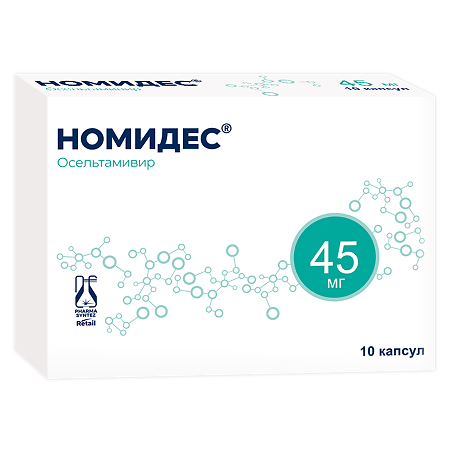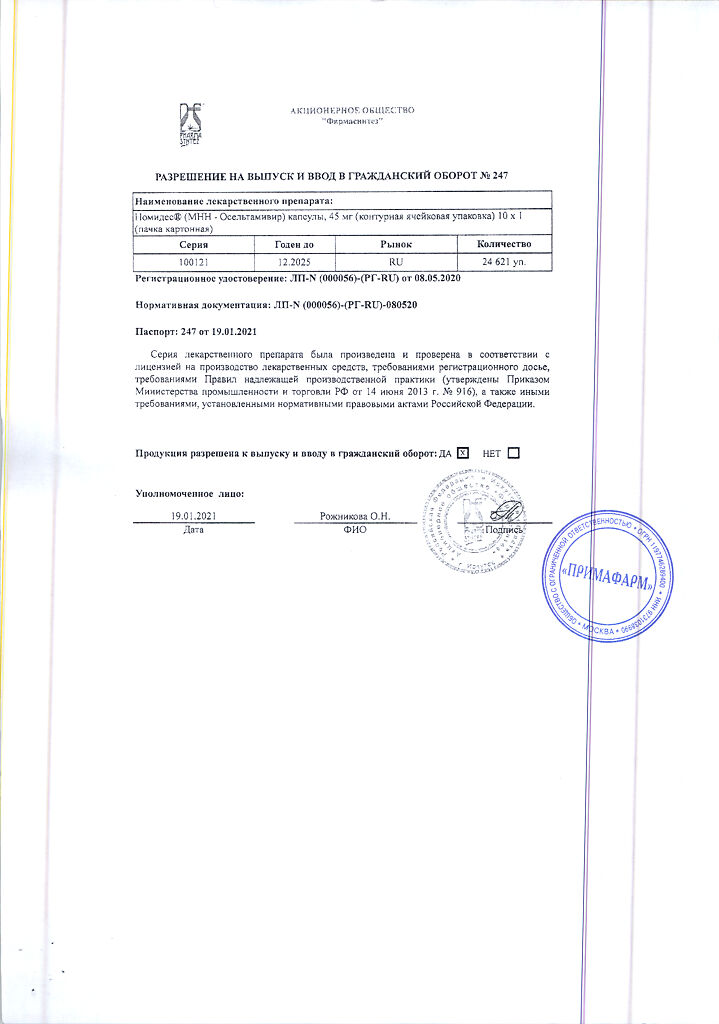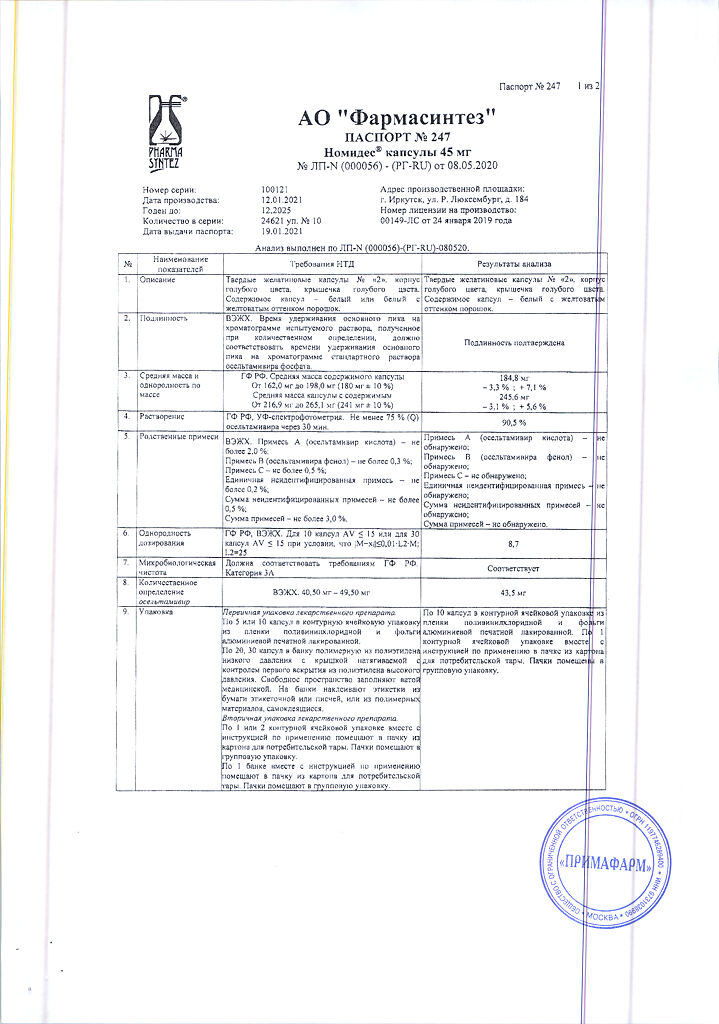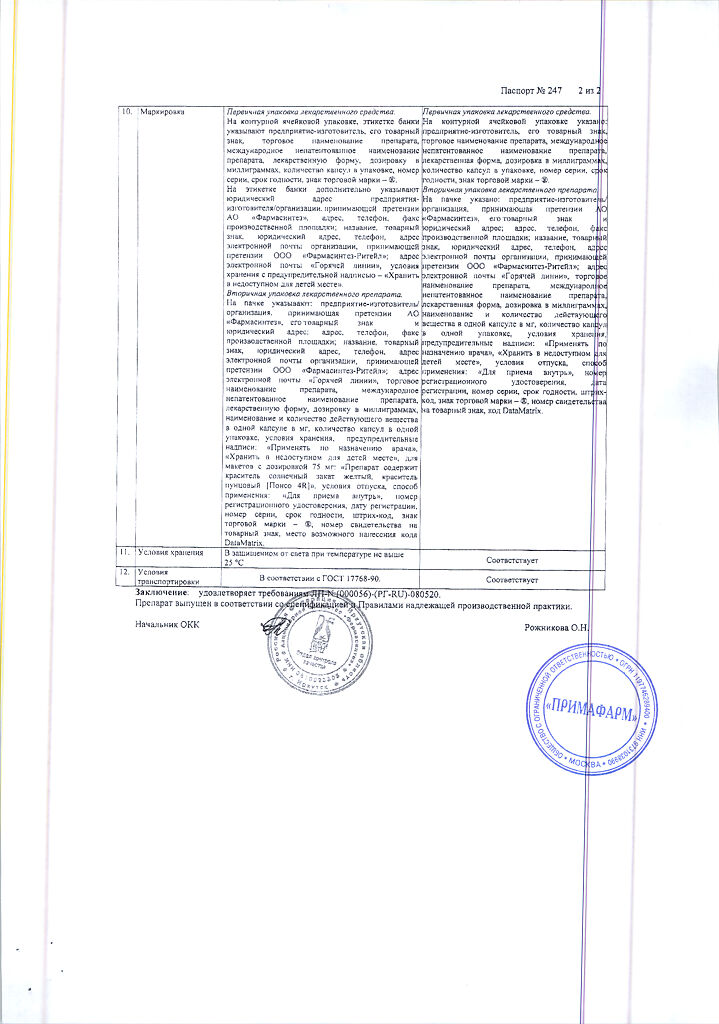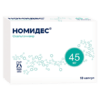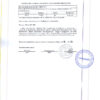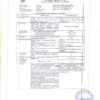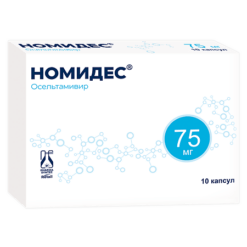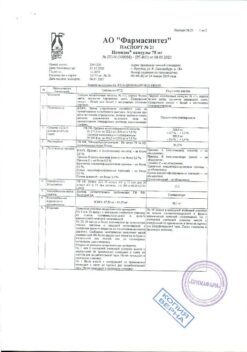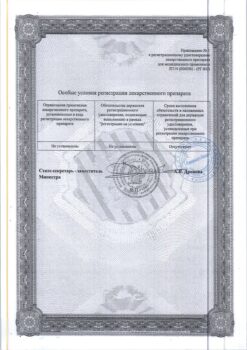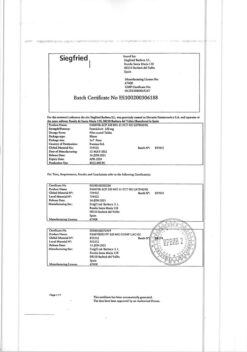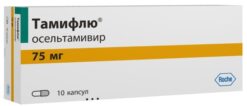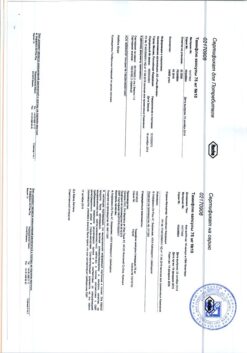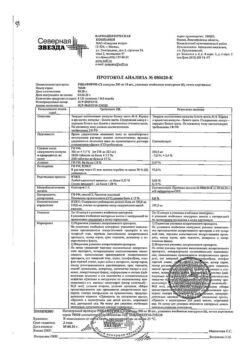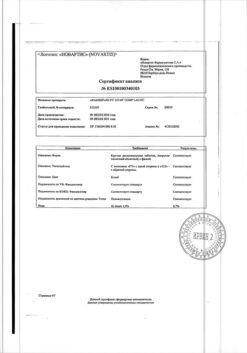No products in the cart.
Description
Nomides is an antiviral drug that contains oseltamiviracarboxylate, which inhibits influenza A and B viruses. As a result, it suppresses: the release of newly formed viral particles from infected cells, their penetration into the respiratory epithelial cells and further spread of the virus in the body.
Nomides is effective in the prevention and treatment of influenza in adults and children over 1 year old. When initiated no later than 40 hours after the onset of symptoms, Nomides shortens considerably the clinical manifestations of influenza infection, reduces their severity and decreases the frequency of flu complications requiring antibiotics (bronchitis, pneumonia, sinusitis, otitis media) and shortens the time of virus discharge from the body.
After oral administration oseltamivir phosphate is easily absorbed in the gastrointestinal tract and is highly converted to the active metabolite under the action of hepatic esterases. Plasma concentrations of the active metabolite are determined within 30 minutes and reach near maximum levels 2-3 hours after administration. At least 75% of the dose taken orally enters the systemic bloodstream as an active metabolite. Plasma concentrations are proportional to the dose and independent of food intake.
Indications
Indications
• Treatment of influenza in adults and children over 1 year of age.
• Prevention of influenza in adults and adolescents over 12 years of age who are at high risk of infection with the virus (in military units and large production teams, in debilitated patients).
• Prevention of influenza in children over 1 year of age.
Pharmacological effect
Pharmacological effect
Nomides is an antiviral drug that contains oseltamivir carboxylate, which inhibits influenza A and B viruses. As a result, the release of newly formed viral particles from infected cells, their penetration into the epithelial cells of the respiratory tract and the further spread of the virus in the body are suppressed.
Nomides is an effective means of preventing and treating influenza in adults and children over 1 year of age. When treatment is started no later than 40 hours after the first symptoms of influenza appear, Nomides significantly shortens the period of clinical manifestations of influenza infection, reduces their severity and reduces the incidence of influenza complications requiring the use of antibiotics (bronchitis, pneumonia, sinusitis, otitis media), and shortens the time of virus shedding from the body.
After oral administration, oseltamivir phosphate is easily absorbed from the gastrointestinal tract and is highly converted into an active metabolite by hepatic esterases. Concentrations of the active metabolite in plasma are determined within 30 minutes and reach almost maximum levels 2-3 hours after administration. At least 75% of the dose taken orally enters the systemic circulation in the form of an active metabolite. Plasma concentrations are dose proportional and independent of food intake.
Special instructions
Special instructions
Extemporaneous preparation of Nomides® suspension from capsules
In cases where adults, adolescents and children have difficulty swallowing capsules or if there are signs of “aging” of the capsules, open the capsule and pour its contents into a small amount (maximum 1 teaspoon) of a suitable sweetened food (normal or sugar-free chocolate syrup, honey, light brown sugar or table sugar dissolved in water, sweet dessert, sweetened condensed milk, applesauce or yogurt) to cover up the bitter taste. The mixture must be mixed thoroughly and given to the patient as a whole. The mixture should be swallowed immediately after preparation.
Capsules 75 mg
If patients require a dose of 75 mg, the following instructions should be followed:
1. Holding one Nomides® 75 mg capsule over a small container, carefully open the capsule and pour the powder into the container.
2. Add a small amount (no more than 1 teaspoon) of a suitable sweetened food (to cover the bitter taste) and mix well.
3. Mix the mixture thoroughly and drink it immediately after preparation. If there is a small amount of mixture left in the container, you should rinse the container with a small amount of water and drink the remaining mixture.
If patients require doses of 30-60 mg, the following instructions should be followed for proper dosing:
1. Holding one Nomides® 75 mg capsule over a small container, carefully open the capsule and pour the powder into the container.
2. Add 5 ml of water to the powder using a syringe with marks indicating the amount of liquid collected. Mix thoroughly for 2 minutes.
3. Draw the required amount of mixture into the syringe from the container according to the following table.
Body weight
Recommended dose
Amount of Nomides® mixture per dose
≤15kg
30 mg
2 ml
>15-23 kg
45 mg
3 ml
>23-40 kg
60 mg
4 ml
There is no need to collect undissolved white powder as it is an inactive filler. By pressing the plunger of the syringe, inject all its contents into the second container. Any remaining unused mixture should be discarded.
4. In a second container, add a small amount (no more than 1 teaspoon) of a suitable sweetened food to cover the bitter taste and mix well.
5. Mix the mixture thoroughly and drink it immediately after preparation. If there is a small amount of mixture left in the container, you should rinse the container with a small amount of water and drink the remaining mixture.
This procedure should be repeated before each dose of the drug.
Active ingredient
Active ingredient
Oseltamivir
Composition
Composition
Active substance:
Oseltamivir phosphate 59.10 mg, which corresponds to the content of Oseltamivir 45.00 mg.
excipients:
Colloidal silicon dioxide (Aerosil) – 6.00 mg/9.00 mg/15.00 mg;
copovidone -3.60 mg/5.40 mg/9.00 mg;
pregelatinized starch – 65.60 mg/98.40 mg/164.00 mg;
croscarmellose sodium – 1.840 mg/2.760 mg/4.60 mg;
sodium stearyl fumarate -0.920 mg/1.380 mg/2.30 mg;
talc – 2.640 mg/3.960 mg/6.60 mg.
Composition of hard gelatin capsules:
capsule body: purified water – 14-15 mg, sodium lauryl sulfate – 0.08 mg, titanium dioxide – 0.97524 mg, brilliant blue dye – 0.2626 mg, gelatin – up to 100 mg;
capsule cap: purified water – 14-15 mg, sodium lauryl sulfate – 0.08 mg, titanium dioxide – 0.97524 mg, brilliant blue dye – 0.2626 mg, gelatin – up to 100 mg.
Contraindications
Contraindications
• Hypersensitivity to oseltamivir phosphate or any component of the drug;
• End-stage renal failure (creatinine clearance ≤10 ml/min);
• Severe liver failure;
• Children under 1 year of age.
With caution
• Pregnancy, breastfeeding period.
• Use in combination with drugs that have a narrow breadth of therapeutic action (for example, chlorpropamide, methotrexate, butadione).
Interaction
Interaction
Clinically significant drug interactions are unlikely based on pharmacological and pharmacokinetic studies. Oseltamivir phosphate is highly converted into an active metabolite by esterases, mainly located in the liver. Drug interactions caused by competition for binding to the active sites of esterases are not widely represented in the literature.
The low degree of binding of oseltamivir and the active metabolite to plasma proteins does not give reason to assume the presence of interactions associated with the displacement of drugs from protein binding. In vitro studies indicate that neither oseltamivir phosphate nor its active metabolite is a preferred substrate for multifunctional cytochrome P450 oxidases or glucuronyltransferases.
There are no reasons for interaction with oral contraceptives. Cimetidine, a nonspecific inhibitor of the cytochrome P450 system isoenzyme and competes with alkaline drugs and cations in the process of tubular secretion, does not affect the plasma concentrations of oseltamivir and its active metabolite.
Clinically significant drug-drug interactions associated with competition for tubular secretion are unlikely, taking into account the safety margin for most of these drugs, the routes of elimination of the active metabolite of oseltamivir (glomerular filtration and anionic tubular secretion), as well as the excretory capacity of each of the routes.
Probenecid leads to an approximately 2-fold increase in the AUC of the active metabolite oseltamivir (due to a decrease in active tubular secretion in the kidneys). However, dose adjustment is not required when used concomitantly with probenecid, given the safety margin of the active metabolite.
Co-administration with amoxicillin does not affect plasma concentrations of oseltamivir and its components, demonstrating weak competition for elimination by anionic tubular secretion. Concomitant use with paracetamol does not affect plasma concentrations of oseltamivir and its active metabolite or paracetamol.
Pharmacokinetic interactions between oseltamivir and its main metabolite were not detected when taken simultaneously with paracetamol, acetylsalicylic acid, cimetidine or antacids (magnesium and aluminum hydroxide, calcium carbonate), warfarin, rimantadine or amantadine.
When using osaltemivir with commonly used drugs such as angiotensin-converting enzyme inhibitors (enalapril, captopril), thiazide diuretics (bendroflumethiazide), antibiotics (penicillin, cephalosporins, azithromycin, erythromycin and doxycycline), histamine H2 receptor blockers (ranitidine, cimetidine), beta-blockers (propranolol), xanthines (theophylline), sympathomimetics (pseudoephedrine), opiates (codeine), glucocorticosteroids, inhaled bronchodilators and non-narcotic analgesics (acetylsalicylic acid, ibuprofen and paracetamol), no changes in the nature or frequency of adverse events were observed.
Oseltamivir should be used with caution in combination with drugs that have a narrow therapeutic action (for example, chlorpropamide, methotrexate, butadione).
Overdose
Overdose
In most cases, overdose during clinical trials and post-marketing use of oseltamivir was not accompanied by any adverse events.
Manufacturer
Manufacturer
Pharmasintez JSC, Russia
Additional information
| Manufacturer | Pharmasintez JSC, Russia |
|---|---|
| Medication form | capsules |
| Brand | Pharmasintez JSC |
Other forms…
Related products
Buy Nomides, 45 mg capsules 10 pcs with delivery to USA, UK, Europe and over 120 other countries.

